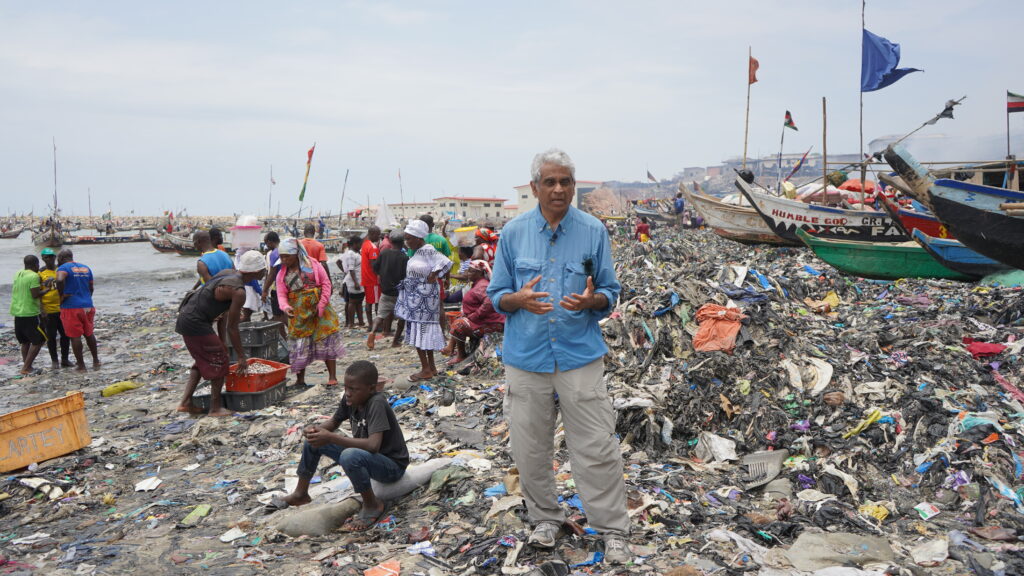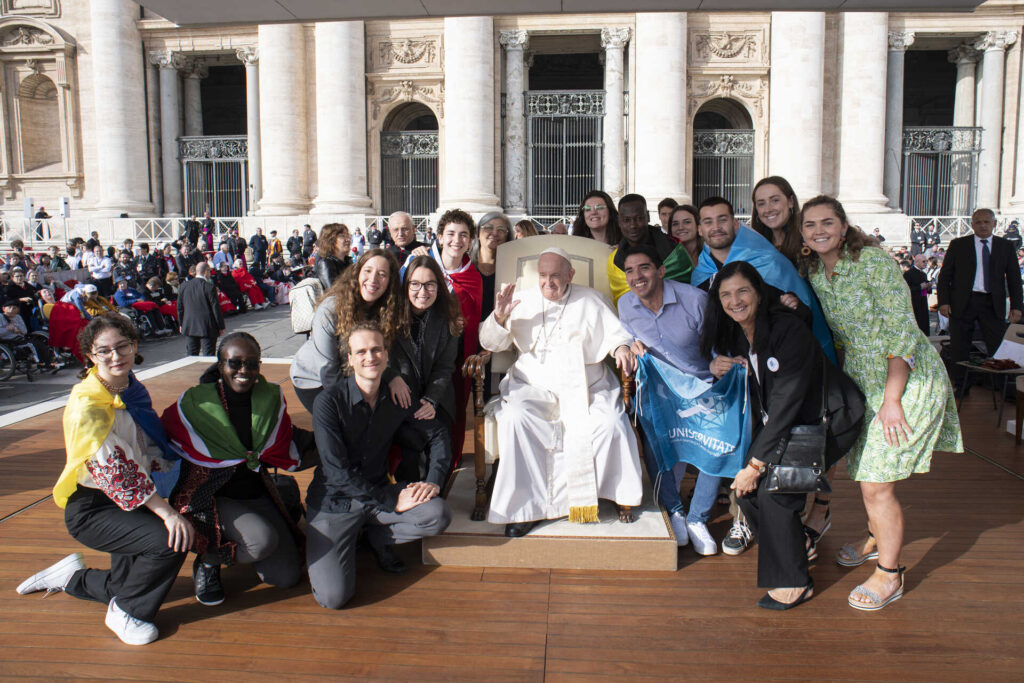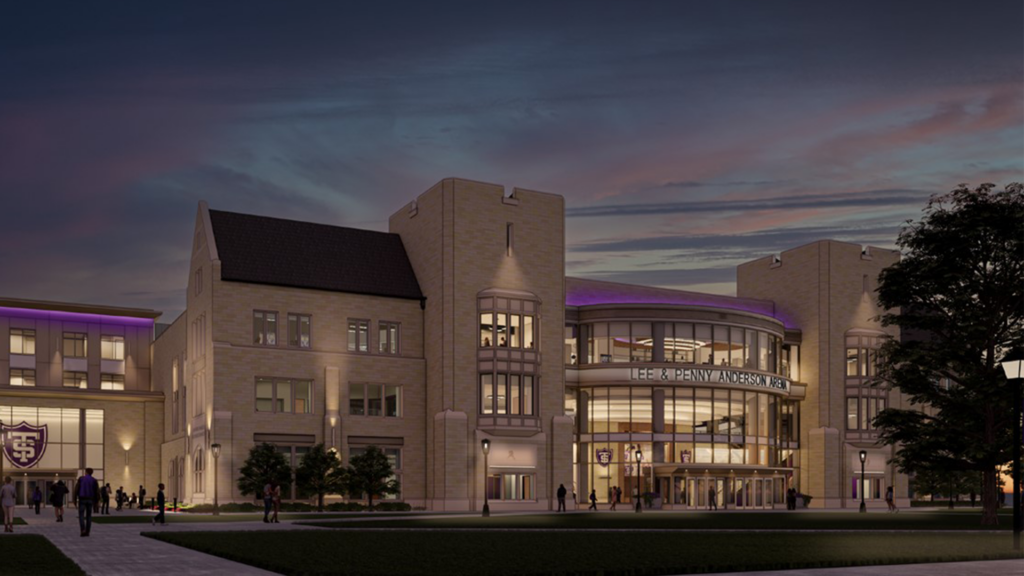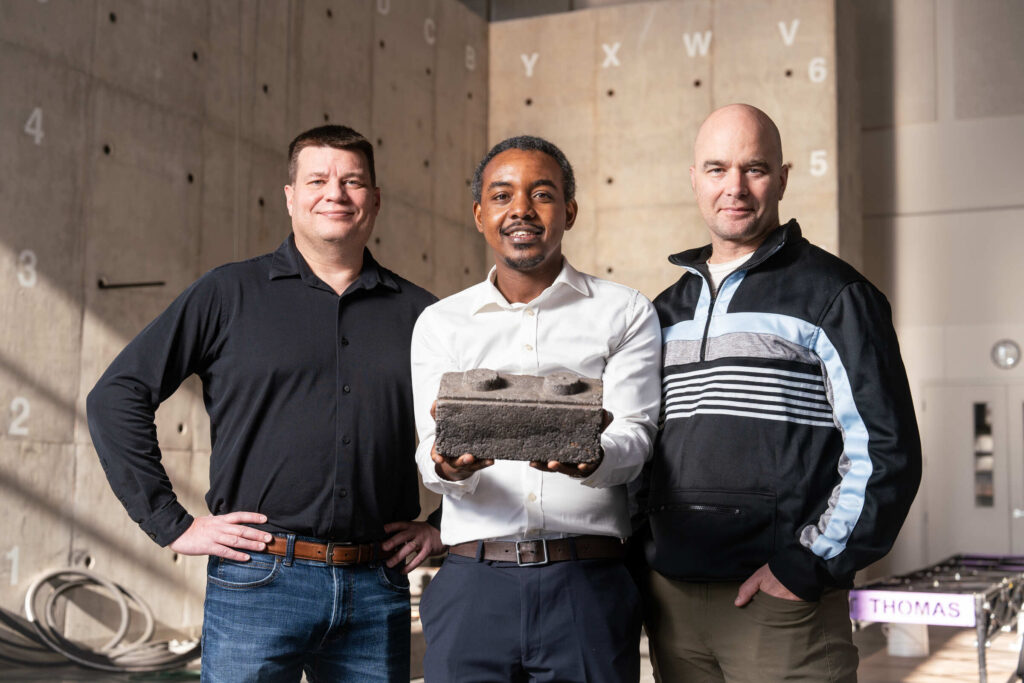A stone sculpture designed to evoke strength and vulnerability, spirituality and earthliness, loss and renewal has been selected as the winning design for a memorial to commemorate those students who passed away while enrolled at the University of St. Thomas. The Memorial for Deceased Students, funded by the Undergraduate Student Government, will be located adjacent to the Chapel of St. Thomas Aquinas.
James Dinh, a Southern California-based artist who submitted the prevailing entry, said he was drawn to the competition because of his interest in memorials and his belief that commemoration is crucial to healing.
Karen Lange, vice president for student affairs, who initiated the project, sat on the selection committee to evaluate artists’ submissions. She said that it is important to have a memorial on campus to remember the students who passed away while enrolled.
“The project, which began as an idea about four years ago, has been a collaboration with students in response to their desire to have a place to share their grief in the time of loss,” said Lange. “For some students it may be the first time they have experienced death in their lives. It is designed to be a place to comfort each other in prayer and grief and at the same time be a place where they can be alone with their thoughts and memories of their loved one.”
Dinh’s design consists of four large granite panels that rise from a concrete base to form a cross, with the top of each panel angling upward to create a sense of uplift.
The stone panels, said Dinh, express “solidity and strength.” He added, “The stone is intended to symbolize the earth and the corporeal body. Two glass discs inset into the stone panels evoke an ephemeral lightness with their translucency. Their circular form symbolizes both the heart and the eternal soul. Both loss and renewal are made visible through with this void that captures light,” he said.
“The solidity of granite with the opacity of the glass come together in Dinh’s design to create a work that is solid, warm, and invites the users to remember with their whole heart and soul those students who have left us too soon,” said art history professor Victoria Young, who was on the artist selection committee. “The design of Dinh’s sculptural memorial provides quadrants for contemplation and encourages the user to view it from different angles. The warmth of the reddish-orange glass will capture light differently depending on the time of day and the seasons and it will cast a glow onto the surrounding landscape, thereby enlivening its role in the commemorative site.”
His goal, Dinh said in his proposal, was to design a sculpture that allows for multiple interpretations, working on a physical, tactile level as well as on an emotional one. His hope is that the memorial will allow people to contemplate life and loss within a setting that evokes calm and peace.
“Campus is such a busy place filled with academics and cocurricular events that it can be hard to find time to slow down, grieve, remember and heal,” said Lange. “I think this will be a place for families who have lost a loved one to gather to remember their loved one. I am hoping family members always feel a connection to St. Thomas.”
As for current students, Lange noted that because the loss of a friend is devastating, especially during a time of their lives when they are just developing as young adults, the university also has counselors, faculty, campus ministry and other staff who work closely with families and friends when a student dies. “This new space is meant to provide additional comfort and peace during a very difficult time,” she added.
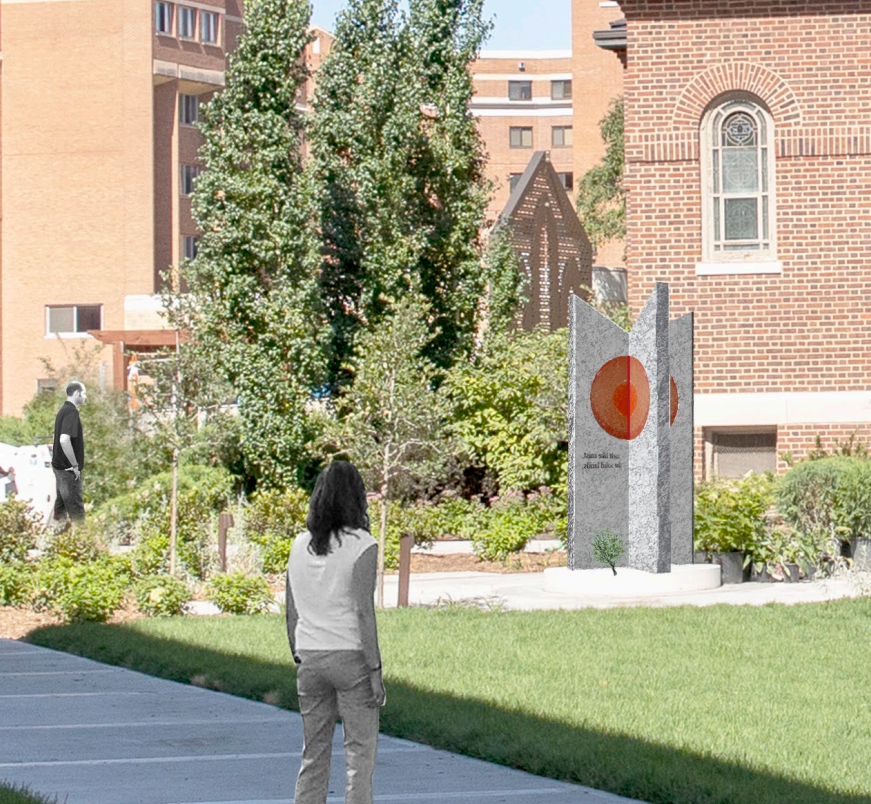 The landscaped spot where the memorial will stand will be a focal point of the university’s St. Paul campus, used by students, staff, faculty and the community for prayer, private contemplation, homework and relaxation. An annual day of remembrance for families, friends and the university community will be held at the site each May, in tribute to students who have died during their time at the university.
The landscaped spot where the memorial will stand will be a focal point of the university’s St. Paul campus, used by students, staff, faculty and the community for prayer, private contemplation, homework and relaxation. An annual day of remembrance for families, friends and the university community will be held at the site each May, in tribute to students who have died during their time at the university.
Senior Abby Johnson, a student on the selection committee, said there are a multitude of reasons why she thinks Dinh’s sculpture will be an appropriate memorial for all to gather at and stand to commemorate those who passed away while students at St. Thomas.
“First off, the way the sculpture is designed will allow for privacy as well as for group gathering, as the granite pieces sort of create little areas where individuals can stand and be blocked a little bit from their surroundings and have a moment to themselves,” said the soon-to-graduate psychology major who is minoring in Spanish and Catholic studies. “Secondly, one of my favorite parts of Dinh’s piece is the opportunity to have some words incorporated into the design as this will further emphasize the fact that this is a place to commemorate the students who have passed away, and offer a bit of reflection. I also think the sunlight will really play off the sculpture nicely throughout the day, which is a testament to Dinh’s design.”
The Student Memorial Selection Committee was committed to securing the work of an artist who fostered a culture of care for every member of the campus community while being transformative and beneficial to the student experience, said Young. “Dinh’s design uses materials, forms and symbolism that speak to many, rather than to a specific group. It is inclusive and has limitless interpretations.”
Young added that, “a connection with the university’s mission of educating ‘morally responsible leaders’ is met with this memorial in that remembrance and commemoration endure, as it communicates principles of ethical citizenship.”
Dinh’s other work includes a sculpture in Orange County, California’s Little Saigon area that helps tell the story of building a new community from the tragedy of war. It was a personal project for Dinh, whose family came to the United States as refugees in the aftermath of the Vietnam War. At night, the sculpture is illuminated from within like a lantern, serving as a beacon while symbolizing the community’s resiliency and hope.
He also designed the Equity Fountain in Helena, Montana, which replaced a Confederate monument that was taken down by the city at the request of residents. Sitting atop a large granite millstone, the stainless steel sculpture has words in English and a Native American language “woven” into a sphere. They serve as a reminder of the need to remain steadfast in ensuring that society is guided by the ideals of equality, diversity and tolerance.
Members of the Student Memorial Selection Committee included students, families of the deceased and representatives from several university departments including Campus Ministry, Art History, the Provost’s office, and University Development and Alumni Relations. They included Rabbi Amy Ariel, Father Lawrence Blake, Ryan French, Abby Johnson, Kristin Johnson, Pascale Kunda, Karen Lange, Michael Sullivan, Wendy Wyatt, Dia Yang and Victoria Young. Other members of the memorial committee who were not part of the selection committee included Linda Baughman, Lou Anne Sexton and Josh Gallus. In addition, Anna Rauzi '19 was instrumental in working with Undergraduate Student Government in the first year of the project.
“They showed great dedication in not only crafting the mission and purpose of the call for proposals, but also in reviewing them and narrowing the choice to two finalists,” said Young. “In making their decision the committee also weighed extensive feedback from the university community, which voted for its favorite as well as provided comments on the top two finalists. It was not an easy decision for the committee, but James’ design spoke to us as an object that could facilitate individual and collective memory in a very powerful way.”
Dinh is working with Young and the university on final granite selection and will be visiting the quarries in Minnesota in June. With other representatives of the university he is also advising on the text and its font style that will be inscribed on the memorial. Completion of the project is anticipated in fall 2021.

